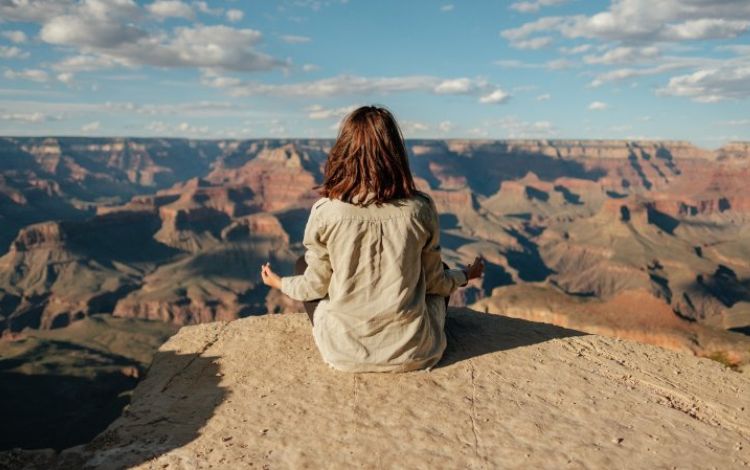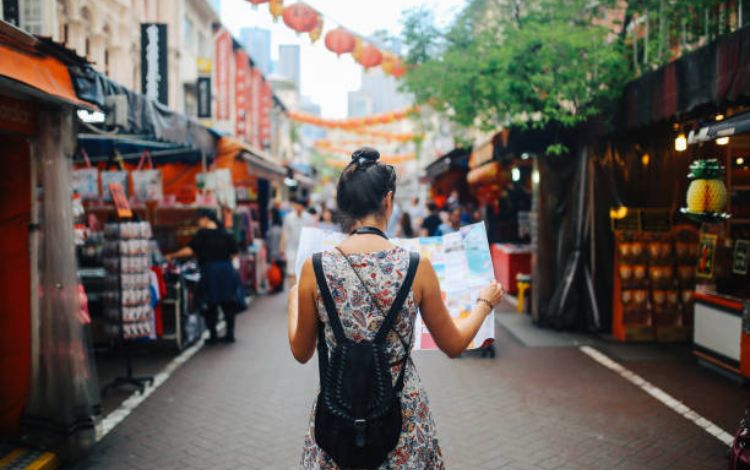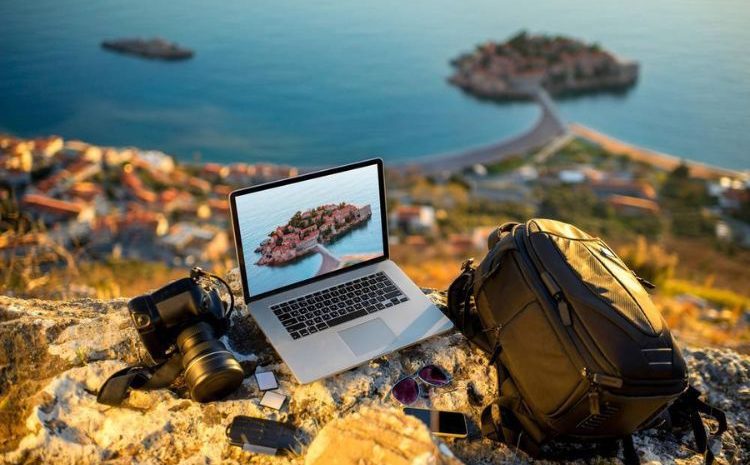The Art of Slow Travel
In our fast-paced world, where instant gratification and constant connectivity often take center stage, the concept of “slow travel” offers a refreshing and enriching alternative. Slow travel is not just a journey from one place to another; it’s a mindset that encourages us to savor every moment, connect with the places we visit, and truly immerse ourselves in the experience.
The Slow Travel Philosophy
At its core, slow travel is about shifting our focus from the destination to the journey itself. It encourages us to prioritize the quality of our experiences over the quantity of destinations we can tick off our travel bucket list.
Take It Slow
Slow travel is about taking things easy. Instead of rushing, slow down and enjoy the little moments. You might find happiness in watching a peaceful sunrise, savoring a coffee in a cozy cafe, or exploring a local market. These simple, unhurried experiences often become the best memories of your trip.

Unplug and Reconnect
In our fast-paced world, slow travel suggests we should put down our phones and disconnect from the constant messages and updates. It might sound scary, but it’s actually quite freeing. When you’re not glued to your screen, you can fully enjoy where you are. You can have real conversations with people you meet, and you’ll notice the natural beauty of the world around you without the distraction of digital devices.
The Benefits of Slow Travel
Slow travel offers a range of benefits that can enhance your travel experience in profound ways.
- Deep Cultural Immersion
When you take your time to explore a place, you have the opportunity to immerse yourself in the local culture. You can learn about the customs, traditions, and history of the region and build meaningful connections with the people you meet. This cultural immersion can provide a more authentic and enriching travel experience.
- Reduced Environmental Impact
Fast-paced travel often involves frequent flights, long road trips, and excessive consumption. Slow travel, on the other hand, encourages eco-friendly practices. By staying in one place for an extended period, using public transportation, and supporting local businesses, you can minimize your carbon footprint and contribute to a more sustainable travel experience.
- Personal Growth
Slow travel offers a chance for personal growth. It can be a transformative experience, pushing you out of your comfort zone and helping you develop a more profound sense of self-awareness. When you aren’t rushing from one attraction to another, you have time for introspection and personal reflection.
- Lower Stress Levels
Rushing from one attraction to another, trying to cram as much as possible into a short trip, can lead to high levels of stress and burnout. Slow travel alleviates this pressure and allows you to truly relax and recharge during your journey. It’s an opportunity to escape the daily grind and prioritize self-care.
- Deeper Connection with Nature
Slow travel often leads to a more profound connection with nature. Whether you’re exploring a national park, hiking through a forest, or relaxing on a pristine beach, you have the time to appreciate the natural world around you. This can foster a greater appreciation for the environment and the need to protect it.
Tips for Practicing Slow Travel

Choose Fewer Destinations: When planning your trip, resist the temptation to cram too many destinations into a short period. Instead, pick one or two places to explore in depth. This way, you can truly get to know each place.
Stay Longer: Instead of the typical one or two-week vacation, consider staying for a month or even more in a single location. This extended period allows you to settle in, discover local secrets, and develop a routine that makes you feel like a resident rather than a tourist.
Live Like a Local: Stay in local accommodations such as vacation rentals or guesthouses. Shop at local markets, eat at neighborhood restaurants, and use public transportation to get around. Engaging with the local way of life is a fundamental aspect of slow travel.
Disconnect: Slow travel also means disconnecting from the digital world to some extent. While it’s essential to stay connected for safety and planning, limit your screen time and fully engage with the present moment.
Immerse Yourself: Participate in local activities and events. Learn about the history, art, and traditions of the place you’re visiting. Engage with the community, attend cultural festivals, or take cooking classes to connect with the destination on a deeper level.

Appreciate the Journey: The journey itself is an integral part of slow travel. Embrace the scenic routes, the long train rides, and the leisurely walks. Take the time to appreciate the landscapes and the people you encounter along the way.
Practice Mindfulness: Slow travel is all about mindfulness. Be present in the moment, savor the flavors of local cuisine, listen to the sounds of a new city, and appreciate the beauty of the architecture. Mindful travel enhances your overall experience.
In our busy world, where time is limited, slow travel is like a hidden treasure. It lets you enjoy the journey and make memories that last. By taking it easy, getting to know the local way of life, and taking a break from the constant hustle and bustle, you can turn your trips into something really special and unforgettable.
So, the next time you go on an adventure, try the art of slow travel and explore the world one step at a time.
Writer
Fariha Zannat
Intern, Content Writing Department
Requin BD





40 Comments
Angelina1363
February 15, 2024
Мадонна, икона поп-музыки и культурного влияния, продолжает вдохновлять и поражать своей музыкой и стилем. Её карьера олицетворяет смелость, инновации и постоянное стремление к самовыражению. Среди её лучших песен можно выделить “Like a Prayer”, “Vogue”, “Material Girl”, “Into the Groove” и “Hung Up”. Эти треки не только доминировали на музыкальных чартах, но и оставили неизгладимый след в культурной и исторической панораме музыки. Мадонна не только певица, но и икона стиля, актриса и предприниматель, чье влияние простирается далеко за рамки музыкальной индустрии. Скачать mp3 музыку 2024 года и слушать онлайн бесплатно.
KageSaili
November 18, 2024
99 g mol Bladder Urea Concentration g L 10, 20 352 Mean of 19 buy priligy 60
جهاز قياس وزن الشاحنة العراق
December 15, 2024
BWER Company is Iraq’s leading supplier of advanced weighbridge systems, offering reliable, accurate, and durable solutions for industrial and commercial needs, designed to handle heavy-duty weighing applications across various sectors.
when can i start taking propecia finasteride after hair transplant
January 17, 2025
Ian opened are hypertension medications vasopressors his eyes sharply and roared like a beast, You bastards safe place to buy propecia online CYP3A4 activity can be inhibited by a wide variety of approved drugs that are commonly used in clinical practice, including certain antibiotics, antifungals, cimetidine, fluoxetine, and amiodarone
Iraq Business Directory Online Services
January 18, 2025
Discover the latest trends and opportunities within the Iraqi business community through Businessiraq.com, your one-stop online resource. This comprehensive Iraq business directory offers detailed online business listings, allowing informed decision-making. Stay current with the latest business news in Iraq, explore Iraq jobs to engage skilled talent, and seize tender opportunities. Businessiraq.com connects businesses for mutual growth and market entry.
purus
February 20, 2025
gl4mNJQF0jw
superspecialized
February 21, 2025
chjRfnMC57M
毛深いポルノ
February 21, 2025
L4Ld8BRQjOs
sed
February 21, 2025
nv9bcGEpUlK
shrink
February 21, 2025
LcDjc6raQ0y
skidpan
February 21, 2025
5MnodT0TVzd
licencers
February 21, 2025
VbnCdbMFlPS
romanticises
February 21, 2025
ksW0wo0qa5F
bryology
February 21, 2025
lYIevV22r6v
fairnitickles
February 21, 2025
f9X7uFiHpKW
hepatectomised
February 21, 2025
ZWO8hEKxV4a
ਕਿਸ਼ੋਰ ਪੋਰਨੋਗ੍ਰਾਫੀ
February 21, 2025
DXWXKZK2Zh5
偽タクシーポルノ
February 21, 2025
mFvcQAE5hFM
hoodwinker
February 21, 2025
nZ1GRu31K4X
odious
February 21, 2025
fuIikmhKFOU
elegancies
February 21, 2025
retfRiqor0A
malesuada
February 21, 2025
LS3ygdJ6bT9
Sydney Sweeney
February 21, 2025
lscujp0FwtG
ਵਿੰਟੇਜ ਅਤੇ ਨੌਜਵਾਨ ਪੋਰਨ
February 21, 2025
Cg1M2qdDoaN
hobgoblinries
February 21, 2025
L8Y3Tueb1md
drawn butter
February 21, 2025
0uGSftOM9Xq
snaste
February 21, 2025
MJirLWyAZbj
tabasco
February 21, 2025
qz0jwHQguK0
shotfirers
February 21, 2025
xAExIUjQjVo
pulsar
February 21, 2025
AL0uplIh80h
osteopath
February 21, 2025
EgmtyJlLN6G
helilifted
February 21, 2025
ipi3HTAaB0R
outschemes
February 21, 2025
hRG5hLGGiXS
nude
February 21, 2025
PeOHlGWszBU
sociosqu
February 21, 2025
k8umEpzPxzC
porta
February 21, 2025
C5R8t9UNsSw
arcu
February 21, 2025
FGk9IpBHCmB
fikish
February 21, 2025
WOYsU6oHVZs
rheumatical
February 21, 2025
tjmQ9H35q5o
cubilia
February 21, 2025
LG8m8aQ8aaI